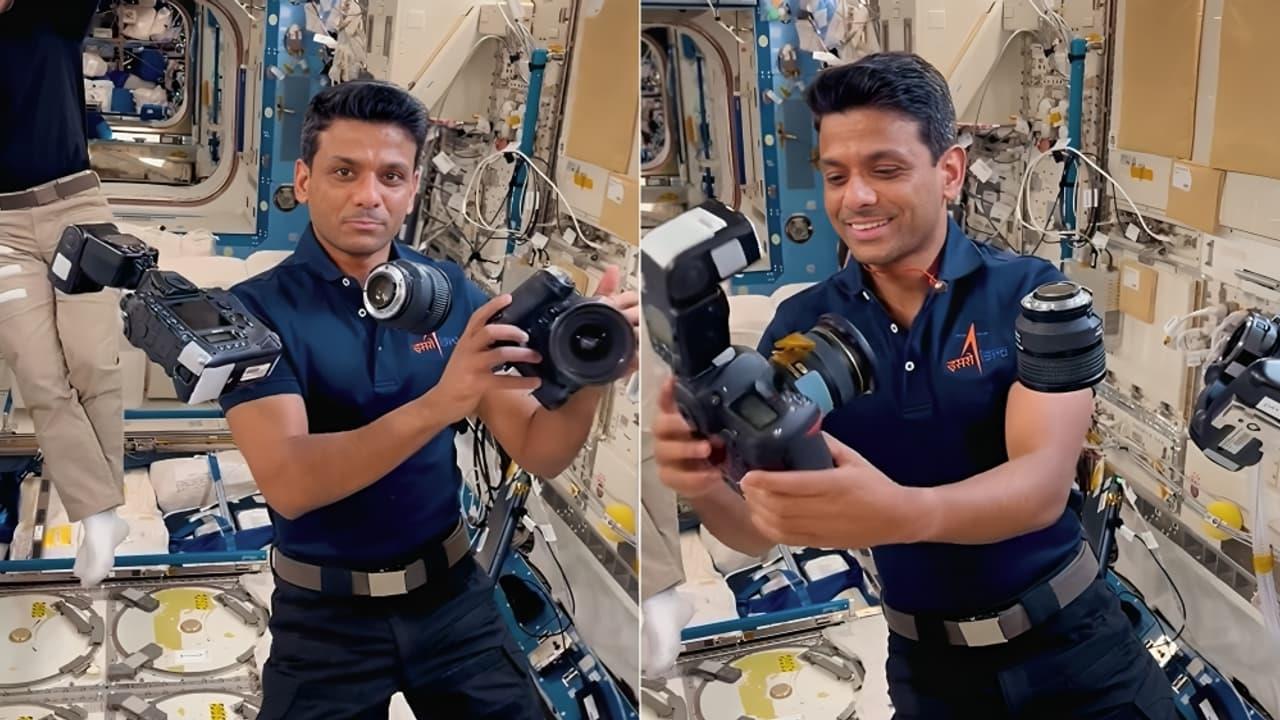Floating Forever: Astronaut Shubhanshu Shukla Breaks Down How Orbit Really Works (WATCH)
Group Captain Shubhanshu Shukla, India's first astronaut to travel to the International Space Station (ISS) as part of the Axiom-4 mission, is winning hearts online with his engaging space lessons. After his viral CPR-in-space demonstration, Shukla has now shared another fascinating post explaining why objects appear to float in space. Using a mix of personal experiences and Isaac Newton's classic thought experiment, Shukla simplified one of the most complex concepts in physics, why orbit is really just perpetual free fall.
First experience aboard the ISS
In his post, Shukla recalled the hesitation he felt when he first reached the ISS. On Earth, when you let go of an object, it falls. But in space, he instinctively tried to hand over items politely to his crewmates instead of letting them float.“The funny part? They were just as cautious at first, so we ended up passing things around like an overly careful game of hot potato,” he wrote.
Believe it or not- Everything you see in this frame is falling. When I first reached the International Space Station, I had this strange hesitation: if I let go of something, won't it just fall? On Earth, that's exactly what happens. In space, though, my early instinct was to... twitter/odCq0Dh8Xy
- Shubhanshu Shukla (@gagan_shux) September 23, 2025
He explained that when he released a camera lens, it did not drop but hovered in place. This, he said, was because both he and the lens were falling at the same speed around Earth.
The science of orbit
To make it easy to understand, Shukla referred to Newton's famous thought experiment of throwing a ball from a mountain. If you throw it gently, it falls nearby. Throw harder, it travels farther before hitting the ground. Throw it fast enough, and as it falls, Earth curves away beneath it. The ball keeps falling but never touches the ground - that is orbit.
Shukla highlighted that astronauts don't feel weightless because gravity disappears. In fact, gravity at the ISS is still about 90% as strong as on Earth. They feel weightless because everything is falling together at the same speed.
Inspiring the public about space
Shukla's clear and relatable explanation has once again drawn attention on social media. His ability to combine scientific knowledge with personal anecdotes is being praised as a unique way to spark curiosity about space. Just like his CPR demonstration post, this explanation is helping people understand the realities of life in orbit in simple terms.
By breaking down orbit into everyday language, Shubhanshu Shukla has shown that floating in space is not about escaping gravity but about falling forever without ever hitting the ground. His posts continue to inspire, educate, and prepare India for its own future space missions like Gaganyaan.
Legal Disclaimer:
MENAFN provides the
information “as is” without warranty of any kind. We do not accept
any responsibility or liability for the accuracy, content, images,
videos, licenses, completeness, legality, or reliability of the information
contained in this article. If you have any complaints or copyright
issues related to this article, kindly contact the provider above.
Most popular stories
Market Research

- New Cryptocurrency Mutuum Finance (MUTM) Raises $15.8M As Phase 6 Reaches 40%
- Bydfi Joins Korea Blockchain Week 2025 (KBW2025): Deepening Web3 Engagement
- Yield Basis Nears Mainnet Launch As Curve DAO Votes On Crvusd Proposal
- 0G Labs Launches Aristotle Mainnet With Largest Day-One Ecosystem For Decentralized AI
- Ethereum-Based Defi Crypto Mutuum Finance (MUTM) Raises Over $16 Million With More Than 720M Tokens Sold
- Fintech's Gender Gap In Focus: Drofa Comms' Women Leading The Way Joins Evolvh3r's She Connects At TOKEN2049





















Comments
No comment